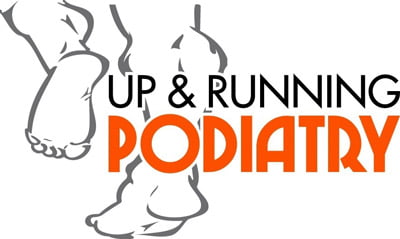Plantar fasciitis and heel spurs both cause heel pain, but plantar fasciitis is due to inflammation, while heel spurs are bony growths that may not always cause discomfort. Research shows they often coexist, but treating plantar fasciitis is usually the key to relief. Effective treatments include supportive footwear, custom orthotics, stretching, shockwave therapy, and foot mobilisation. Book an appointment with Up and Running Podiatry for personalised treatment.
Ever wondered if your heel pain is from plantar fasciitis or a heel spur?
These two foot conditions are often confused because they cause similar discomfort, but they’re actually quite different. Knowing which one is affecting you can make a big difference in getting the right treatment and getting back to pain-free movement.
What’s the Difference Between Plantar Fasciitis and Heel Spurs?
The pain in your heel might be due to plantar fasciitis—inflammation of the thick band of tissue (plantar fascia) that runs along the bottom of your foot—or it could be from a heel spur, which is a bony growth on the heel bone.
“Plantar fasciitis occurs due to degenerative irritation at the origin of the plantar fascia, located at the medial calcaneal tuberosity of the heel and the surrounding perifascial structures.”
— Plantar Fasciitis – StatPearls – NCBI Bookshelf
One of the biggest differences? Plantar fasciitis is caused by inflammation, while heel spurs are extra bone growths. A study published in the Rheumatology Journal found that while heel spurs often exist alongside plantar fasciitis, they don’t always cause pain.
How Can You Tell If It’s Plantar Fasciitis?
Plantar fasciitis pain is usually worse in the morning or after long periods of rest. When you take your first steps, it can feel like a stabbing pain near the heel. This happens because the fascia tightens overnight and stretches suddenly when you start walking.
Risk factors for plantar fasciitis include:
- Standing for long hours, especially on hard surfaces
- Flat feet or high arches
- Wearing shoes with poor arch support
- Sudden increase in exercise intensity
A research study found that plantar fasciitis is commonly linked to foot mechanics and strain, making proper footwear and support crucial.
What About Heel Spurs?
Heel spurs develop over time due to repeated stress on the heel bone. They can be spotted on X-rays, but not everyone with a heel spur experiences pain. Some people have them for years without symptoms.
Studies, like one from the Foot & Ankle International Journal, suggest that larger spurs are often seen in people with chronic plantar fasciitis, but they don’t always cause discomfort on their own.
Can a Heel Spur Cause Plantar Fasciitis?
There’s a lot of debate about whether heel spurs are a cause or just a side effect of plantar fasciitis. Some research, such as a study published in 2023, suggests that spurs may form in response to long-term tension in the plantar fascia.
This means that even if you have a heel spur, treating the underlying plantar fasciitis is often the key to relieving pain.
Treatment Options for Heel Pain
Whether your pain comes from plantar fasciitis or a heel spur, the good news is that treatment options are similar.
Footwear and Orthotics
Wearing the right shoes can make a huge difference. Supportive footwear with proper arch support and cushioning helps to relieve pressure. Up and Running Podiatry offers custom orthotics to help with foot alignment and pain relief. Book a consultation to find the best fit for your feet.
Stretching and Strengthening
Regular stretching of the calf muscles and plantar fascia can prevent tightness. A simple exercise, such as rolling a frozen water bottle under your foot, can help reduce inflammation.
Shockwave Therapy
For stubborn cases, shockwave therapy is an effective option that stimulates healing and reduces pain without surgery.
Foot Mobilisation
Manual therapy techniques, like foot mobilisation therapy, help improve foot function and reduce strain on the plantar fascia.
When Should You See a Podiatrist?
If your heel pain isn’t improving after trying stretches, proper footwear, and rest, it’s time to get professional advice. Up and Running Podiatry specialises in diagnosing and treating foot conditions, offering a range of non-invasive solutions.
Don’t let heel pain stop you from doing what you love. Book an appointment today and take the first step towards relief.

